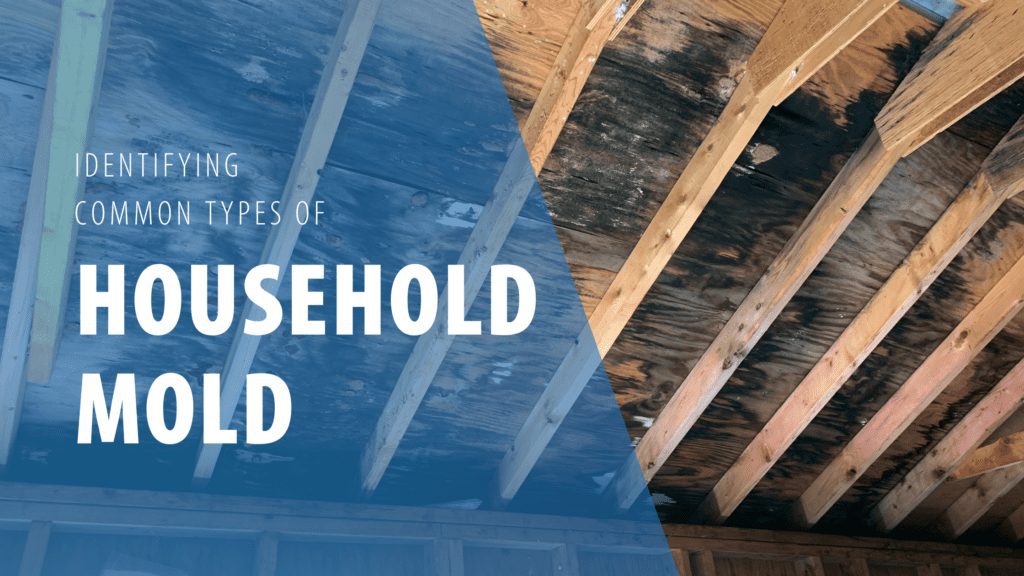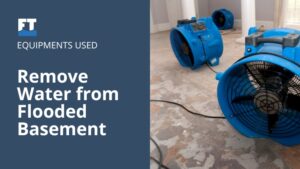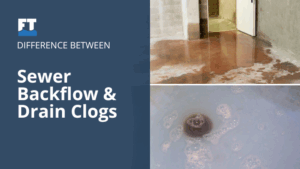The Unexpected Threat to Your Healthy Home
No matter the season, everyone’s most unwanted guest loves to make a surprise appearance in your home–mold. Mold comes in all different shapes, sizes, and hues. However, unlike most household disasters, mold can creep up in some of the most unpredictable places and cause significant damage to your home and family’s health. This is why it is important to be able to identify it before it leads to any major damage. Read on to see some of the most common types of household mold and how you can identify them.
Common Types of Household Mold
Wilson Web Physics reports that over 70% of homes have mold. So the chances are fairly high that you may have some hidden in your home that you are unaware of.
Here are some of the most common types of household mold that you should look out for:
Alternaria Mold
- CHARACTERISTICS: velvet texture with dark green or brown hues
- WHERE IT GROWS: carpeting, windows, showers, sinks, bathrooms, and basements
- HEALTH EFFECTS: respiratory problems with asthma-like symptoms
Alternaria is the most common type of allergenic mold in the world, and it often sprouts up in homes as a result of water damage. It also is known to spread fairly quickly once it has taken root in an area, so it is key to catch it early on.
Aspergillus Mold
- CHARACTERISTICS: long flake shaped pores that can form thick layers; various colors
- WHERE IT GROWS: walls, insulation, crawl spaces, moist spaces, basements
- HEALTH EFFECTS: strong impact on those with weak immune symptoms; asthma-like symptoms, lung infections, and in some cases produces a deadly carcinogen called aflatoxin
Like Alternaria, aspergillus is one of the most common allergenic molds found in households. It has over 185 different types, so it is slightly harder to identify because each strand varies, but typically it appears in variations of grey, brown, yellow, green, black, or white. This mold is also extremely dangerous if left untreated because of its ability to produce aflatoxin, which is a dangerous carcinogen that is known to increase the risk of liver cancer. Aspergillus mold can be caused by water damage in your home, particularly in places where paper, fabric, or wood building materials have been exposed to moisture.
Cladosporium Mold
- CHARACTERISTICS: powdery substance that can vary in color from grey, brown, green, or black
- WHERE IT GROWS: wood, furniture, insulation, fabrics, upholstery, and carpets
- HEALTH EFFECTS: allergic reactions to eyes, nose, throat and skin; lung infections; sinusitis
Cladosporium is another allergenic mold, but it is unique in that it can grow in both warm and cool climates which allows for it to persist year-round. It can grow in bathrooms, on carpets, wallpaper, fabrics, wood, and painted surfaces. Another thing to be wary of when handling Cladosporium is its powder-like consistency.
Trichoderma Mold
- CHARACTERISTICS: wooly textured clusters with a white hue and green patches that become more compact over time
- WHERE IT GROWS: wallpaper, carpeting, air conditioning filters, and HVAC ducts
- HEALTH EFFECTS: some variants are linked to pulmonary and liver infections
Trichoderma is yet another allergenic mold, but it has five different subspecies. This mold is mostly non-pathogenic, however, it does have some ties to heart and liver infections. The real danger lies in its effect on building materials. Trichoderma contains an enzyme that erodes wood and paper products as well as textiles which will lead to the structures with these materials collapsing. If you suspect you have a Trichoderma outbreak in your home, it is critical to get it taken care of as soon as possible to prevent any further damage to your home and health.
Penicillium Mold
- CHARACTERISTICS: velvety texture with a green or blue hue
- WHERE IT GROWS: water damaged areas, wallpaper, carpets, and mattresses
- HEALTH EFFECTS: congestion, coughing, eye irritation, chronic sinus infections, and inflammation of the lungs
Another common household mold, penicillium may be the easiest to spot due to its bright blue, and green color. It is also the mold you commonly associate with rotten food. Penicillium mold is often found in water-damaged homes and buildings, in materials such as carpets, wallpapers, ducting, and even in mattresses. Even though it is very common to come across, it doesn’t mean you should take this contamination any less seriously than another type of mold. Penicillium is easily airborne and spreads rapidly, and if not treated right away it can cause serious health effects.
Stachybotrys Mold
- CHARACTERISTICS: slimy texture with black or dark green color; musty odor
- WHERE IT GROWS: walls, ceilings, floors, moist areas, crawl spaces, basements, attics, air conditioning vents, and more
- HEALTH EFFECTS: severe respiratory issues, headaches, dizziness, asthma, joint pain, fatigue, depression, and links to cancer and Alzheimer’s
Stachybotrys, or more commonly known as “black mold”, is a highly toxic mold that thrives in damp wet areas with high humidity. Growth occurs when there is moisture from water damage, water leaks, condensation, water infiltration, or flooding. Constant moisture is required for its growth – so proper water remediation is an effective way to prevent it. This particular mold can cause very serious health effects if you happen to be exposed to it with symptoms including joint pain, depression, and even cancer in some extreme cases. This is definitely one of the more serious variants of common household mold types, and if you come across it in your home, it is highly important that you act quickly to get it removed.
Do You Have Mold In Your Home?
Now that you are more informed on some of the most common household mold types, it is important to be on the lookout for any signs of them around your home. These signs aren’t always visible or obvious, so if you’ve experienced flooding, leaks, or water damage (and especially any long-term issues) you should call a professional water restoration expert for moisture and mold detection and remediation services.
Mold is a very serious issue, and should not be taken lightly. It is also not something you should try to take care of on your own since the majority can easily be spread if not properly handled or removed.
When disaster strikes, don’t cause yourself any more stress, call The Flood Team!
We are here 24/7 every day of the year to solve any of your water damage, restoration, cleanup, and repair needs. If you are experiencing any water damage in your home or business contact us at (833)-424-0044 for a free, immediate repair quote or visit us here for more information on our services!








